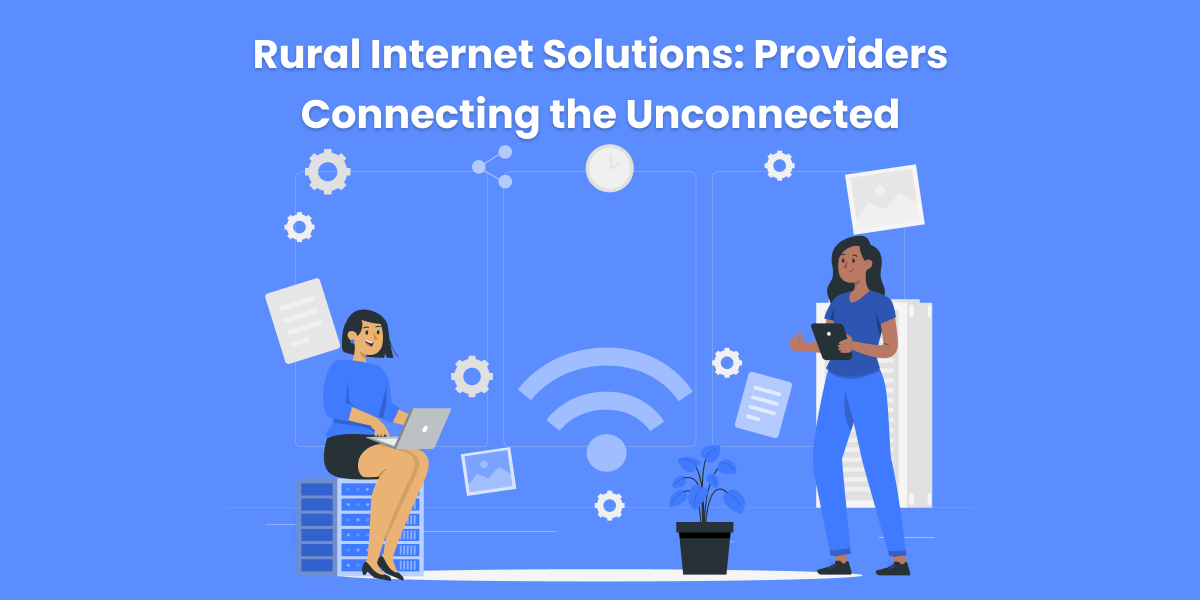Introduction
High-speed internet access has become essential for how rural businesses operate, students learn, and communities connect in today’s digital world. Yet over 19 million rural Americans still lack adequate broadband infrastructure. Major providers are rapidly building out networks enabling cutting-edge rural internet connectivity through innovative wireless and satellite technologies. This article explores top solutions available now providing high-speed access across unconnected American countryside.
The Rural Connectivity Gap
Sparsely populated rural areas present a major infrastructure challenge and investment risk that has left 19.3 million rural residents without sufficient fixed broadband meeting the FCC’s 25Mbps download/3Mbps upload speed standard. The rural-urban “digital divide” also disproportionately impacts minority, low-income, and tribal areas.
These unconnected rural communities experience diminished economic opportunities, access to critical services like healthcare, and quality of life without reliable high-speed internet. Though significant progress has been made recently, the U.S. still lags behind other developed nations in rural broadband penetration.
Expanding wired broadband services able to deliver fiber speeds remains slow and costly. Innovative wireless and satellite network solutions are rapidly emerging as the answer for connecting the unconnected across America’s sprawling rural regions today.
Wireless 5G and LTE Networks
Extending the reach of high-bandwidth 5G and 4G LTE connectivity has become vital for large wireless carriers filling rural gaps. Though less reliable than fiber, advancements in speed, capacity and low-latency now rival traditional broadband.
Verizon 5G Home and Business
Verizon commands extensive wireless infrastructure ideal for rural builds, providing residential 5G Home Internet starting at $25 a month with typical download speeds of 300 Mbps. Their 5G Business Internet brings symmetrical speeds up to 400Mbps for $69 a month.
While their 5G Ultra Wideband network reaches only limited areas so far, their fast 4G LTE network covers over 2.4 million rural square miles ensuring reliable backup connectivity.
T-Mobile Home Internet and Business
With over 325 million people covered by their wireless networks, T-Mobile empowers rural connectivity through 4G LTE and growing 5G services:
• 5G Home Internet provides typical download speeds of 100+ Mbps for just $50 a month.
• 5G Business Internet doubles bandwidth reaching 210+ Mbps for only $70 monthly.
Unlimited data allows high usage without surprises. With Sprint now part of T-Mobile, their combined wireless networks enable boosted rural coverage and performance.
AT&T Wireless Broadband
AT&T offers rural connectivity by leveraging America’s largest 4G LTE network:
• Wireless Broadband provides download speeds up to 75 Mbps for $50 per month.
• Unlimited data plans prevent overages across all packages.
• 25Mbps speeds start at just $35 per month.
With reach to over 330 million people, AT&T sustains reliable wireless service for rural industries and agriculture along with homes and businesses.
Expanding Satellite Broadband
Satellite internet providers broadcast signals from low earth orbits to deliver fast speeds across extremely remote terrain unreachable even by wireless towers. Latency and weather disruptions are still challenges, but new tech improvements by leading providers demonstrate satellite as a growing rural option.
Viasat Residential and Business
Viasat’s expanding satellite fleet opens high-capacity residential options:
• New unlimited Bronze 12 plan offers minimum speeds of 10 Mbps for $69.99 per month.
• Unlimited Silver 12 increases speeds to 25 Mbps for $149.99 per month.
Viasat Business expands options for rural enterprises with diverse data needs:
• Business Bronze 25 plan provides minimum 25 Mbps speeds.
• Business Silver 50 plan guarantees speeds up to 50 Mbps.
HughesNet Business
HughesNet leverages generations of satellite industry experience to offer rural businesses flexible data solutions:
• The Business 60 plan offers 25 Mbps download speeds and 3 Mbps upload speeds for only $69.99 per month.
• Business plans are uncapped to allow unlimited data usage.
With enterprise-grade hardware and dedicated business support, HughesNet brings the benefits of satellite to untapped rural areas.
Leveraging Electric Co-ops for Rural Fiber
Some innovative rural electric co-ops are taking on the role of internet service provider by leveraging existing infrastructure to deploy high speed fiber.
RS Fiber bringing gigabit to rural Minnesota
RS Fiber, a partnership among rural electric co-ops and municipalities in Minnesota, delivers affordable gigabit fiber internet across small towns and farms:
• The 75/75mbps plan costs just $60 per month with no data caps.
• 1Gbps/1Gbps fiber plan offered for $125 monthly.
This local and federal funded model brings world-class connectivity spanning 10K rural residents across a 700 square mile service area with expansion plans in progress.
Co-Mo Electric Cooperative in Missouri
Co-Mo Electric Cooperative originally brought power to rural Missouri communities in the 1930s. Today they are transforming electric infrastructure into a high-speed broadband network:
• Plans offer 100Mbps speeds for only $49.95 per month.
• 1Gbps service provided through fiber-to-the-home connections.
Locally based platforms like this allow profits and savings to stay within rural communities while enabling modern digital opportunities for farms, schools and businesses.
The Digital Future of Rural America
The digital divide remains an ongoing challenge as the pace of technology accelerates. But through substantial wireless build-outs leveraging 5G and LTE combined with the launch of new low-earth orbit satellite fleets, affordable high-speed broadband is now within reach for rural homes and businesses across the vast American countryside like never before.
The innovative models rural electric co-ops provide also showcase fiber and wireless networks operated on a local level as an option for sustaining rural communities. Ongoing government rural development grants and private infrastructure programs provide additional opportunities for rural regions still struggling with connection.






